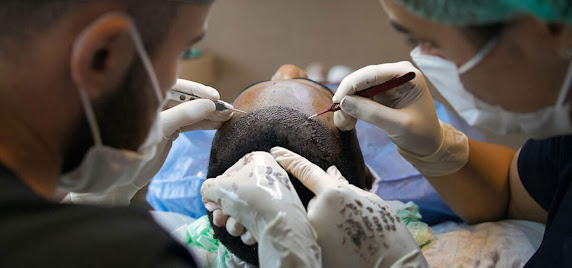HAIR TRANSPLANTS: A COMPREHENSIVE GUIDE FOR CANCER SURVIVORS
Undeniably, dealing with cancer is not an easy feat. It takes a toll mentally, physically, and emotionally, with side effects spilling over into post-treatment life. One such lingering side effect is hair loss due to chemotherapy, an ordeal most patients find emotionally draining.
In light of this, we present a comprehensive guide to hair transplants for cancer survivors – a solution that can restore not only their mane but also a sense of normalcy in their lives.
Understanding Chemotherapy-Induced Hair Loss
Chemotherapy-induced alopecia (CIA) doesn’t happen to everyone undergoing infusion therapy, its dependent on the patient and the type of chemotherapy drug. Many patients experience hair thinning and hair loss – a distressing reminder of the gruelling battle against the disease.
Hair loss from chemotherapy can affect a patient’s body image and increase the risk of depression. Studies have revealed the psychological implications of CIA, further underscoring the importance of post-treatment solutions such as hair transplants for cancer survivors.
Why does Chemotherapy cause Hair Loss?
Chemotherapy targets rapidly dividing cells not only cancerous cells but also the noncancerous cells, including skin and hair cell.
This cause damage hair foillicles which results in:
- Hair thinning
- Hair loss
- Scalp sensitivity
For some, the patchiness, thinning, and even bald spots are permanent. The chances of developing long-term chemotherapy-induced alopecia are greater following infusions that affect hormones — like docetaxel for breast cancer. While CIA is most noticeable on the head, eyebrows, and eyelashes, but it can impact body hair, such as underarms and pubic hair, as well.
When Does Hair Grow Back After Chemotherapy?
Every patient’s situation is unique, but regrowth after chemotherapy typically begins within several weeks of the treatment ending. “Fortunately, most of the time hair loss from chemotherapy is temporary. Even so, it may not be noticeable right away. “Usually this patient population can expect to regrow their hair in three to six months after treatment ends, though the hair might grow back differently. Some of the most common characteristics of post-chemotherapy hair changes include:
- Thinner hair
- Decreased amount of hair
- Varying growth rates
- Patchy or bald spots
- Texture changes
- Colour variations (often greying)
However, for some patients, hair loss may be permanent. A hair transplant can be a viable solution for those struggling with permanent hair loss post-chemotherapy.
Read full blog from here: Hair Transplants: A Comprehensive Guide for Cancer Survivors




Comments
Post a Comment